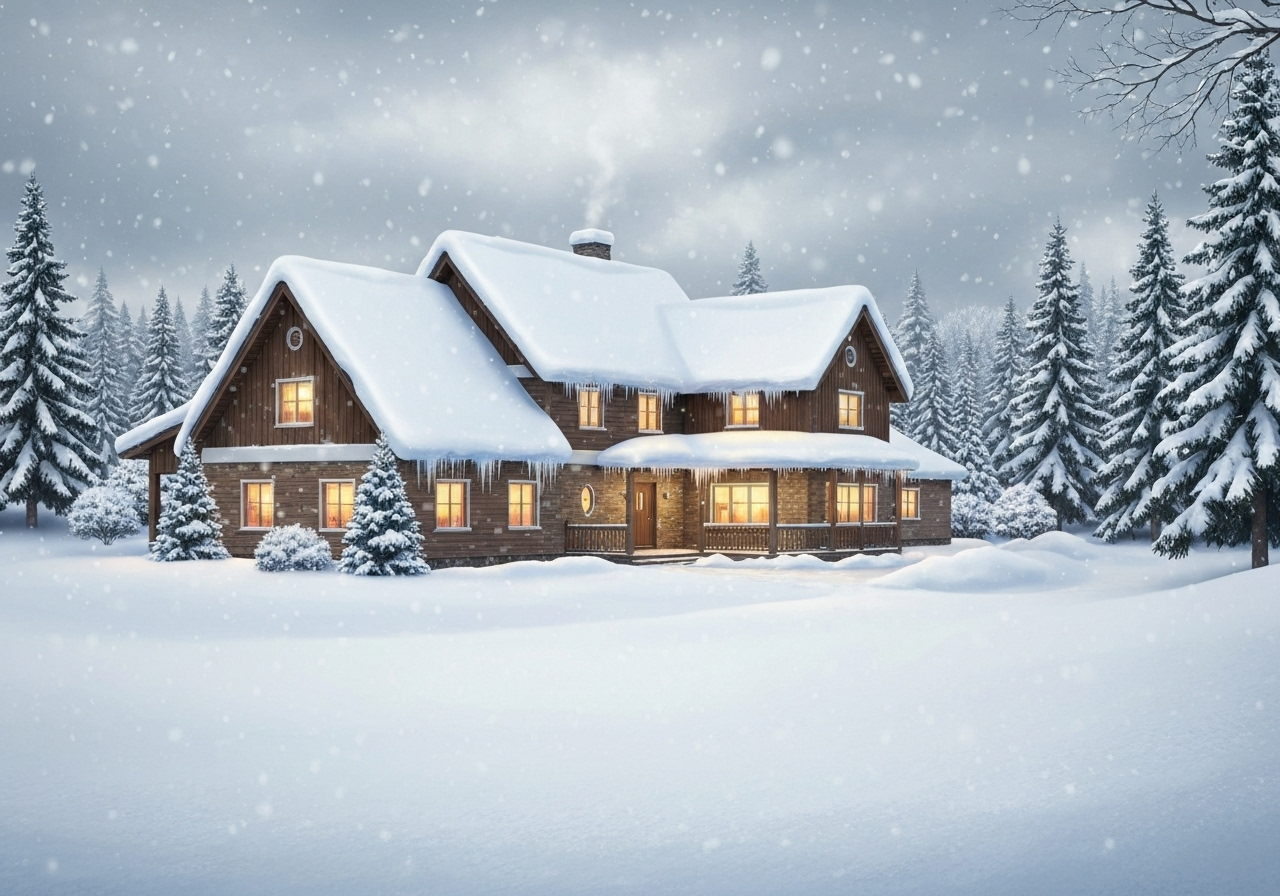Winter is Coming: Protecting Your Home from the Elements
As winter approaches, homeowners face the annual challenge of protecting their properties from severe weather. Understanding your coverage for winter storms and home insurance is crucial for peace of mind and financial security. From heavy snow to freezing temperatures, winter can bring a host of potential damages that can impact your home.
Understanding Winter Storms and Home Insurance Coverage
Most standard homeowners insurance policies (HO-3 or HO-5) offer protection against many perils associated with winter storms. This generally includes damage from snow, ice, freezing rain, and high winds. Your policy typically provides coverage for the dwelling itself, other structures on your property (like sheds or detached garages), and your personal belongings.
According to the Washington Office of the Insurance Commissioner, your homeowner insurance should generally cover damage from winter weather, but keeping your home above 60 degrees during winter is a recommended preventative measure to avoid issues like frozen pipes (insurance.wa.gov). It’s essential to review your specific policy to understand the extent of your coverage and any deductibles that may apply.
Common Winter Storm Damages Your Policy May Cover
Homeowners insurance is designed to cover a variety of damages that can occur during winter storms. Here are some common examples:
- Weight of Snow and Ice: Damage to roofs, gutters, or even structural collapse due to heavy snow or ice accumulation.
- Frozen Pipes: Burst pipes caused by freezing temperatures can lead to significant water damage.
- Wind Damage: Strong winds can tear off shingles, damage siding, or cause trees to fall on your home or other structures.
- Ice Dams: These occur when melting snow refreezes at the edge of your roof, causing water to back up under shingles and into your home.
- Fallen Trees: If a tree, or a limb from a tree, falls on your home, garage, or other insured structure due to winter weather, your policy will typically cover the damage and often the cost of tree removal. This coverage extends even if it’s your neighbor’s tree that falls on your property (insurance.wa.gov).
Coverage typically applies to the repair or replacement of damaged property, including the dwelling, other structures, and personal property, as detailed by Insurance.com (insurance.com).
Key Exclusions: When Home Insurance Won’t Cover Winter Damage
While homeowners insurance provides broad coverage for winter-related perils, certain situations are typically excluded. Understanding these exclusions is critical for avoiding unwelcome surprises:
- Flooding: Damage caused by natural flooding, including fast-melting snow that results in overland flooding, is generally not covered by standard homeowners insurance. A separate flood insurance policy, often through the National Flood Insurance Program (NFIP), is required for this protection.
- Maintenance Issues: Damage resulting from a lack of proper home maintenance, such as a roof in disrepair that exacerbates snow damage, may be denied.
- Sewer Back-up: While frozen pipes bursting may be covered, sewer or drain back-up is often an optional endorsement you need to add to your policy.
- Power Outages: Damage to food in a freezer due to a power outage, unless directly caused by a covered peril (e.g., a tree falling on power lines), might not be covered.
It’s important to differentiate between wind-driven rain and flood damage; while wind-driven rain damage may be covered, flood damage from rising waters is typically excluded from standard policies (insurance.ca.gov).
Proactive Protection: Preparing Your Home for Winter Weather
Preventative measures are your first line of defense against winter storm damage. Taking these steps can reduce the likelihood of filing an insurance claim and keep your home safe:
- Inspect and Seal: Check for and seal any cracks or gaps around windows and doors to prevent cold air and moisture infiltration.
- Clear Gutters: Ensure gutters and downspouts are clear of debris to allow for proper drainage and prevent ice dam formation.
- Trim Trees: Prune dead or weak tree branches that could fall on your home during heavy snow or ice storms.
- Insulate Pipes: Insulate exposed pipes in unheated areas like basements, crawl spaces, and attics to prevent freezing.
- Maintain Heating Systems: Have your furnace and chimney inspected annually to ensure they are in good working order.
- Keep Pathways Clear: Regularly clear snow and ice from sidewalks, driveways, and steps to prevent slip-and-fall accidents, which can lead to liability claims. Experts recommend increasing standard liability coverage to at least $300,000 (insurance.com).
Beyond the Basics: Enhancing Your Home Insurance for Winter
While a standard policy offers good protection, consider additional endorsements for comprehensive winter coverage:
- Water Backup Coverage: This endorsement can protect against damage from sewer or drain back-up, which is typically excluded from standard policies.
- Extended Replacement Cost: In severe, widespread events, construction costs can surge. This endorsement provides extra coverage beyond your dwelling limit to rebuild your home.
- Ordinance or Law Coverage: If winter damage requires repairs that trigger new building codes, this coverage can help with the increased costs of complying with those codes.
Reviewing your policy with an agent and obtaining a complete copy, including your declarations page, is crucial. The California Department of Insurance advises reviewing the definitions section for water damage coverage and exclusions, and asking your agent to explain your coverage limits (insurance.ca.gov).
Secure Your Home All Season Long with Beach Insurance
Navigating the complexities of home insurance, especially concerning winter storms, doesn’t have to be overwhelming. At Beach Insurance LLC, we are dedicated to helping homeowners understand their policies and secure the right coverage for all seasons. Taking proactive steps and ensuring your policy aligns with potential winter risks can save you stress and significant costs. We can assist you in reviewing your current coverage, identifying potential gaps, and exploring options to enhance your home’s protection against winter’s challenges.






